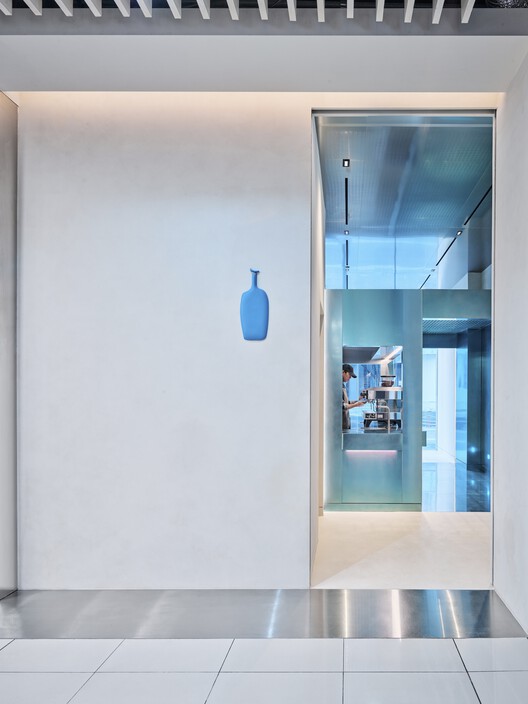
-
Architects: Teo Yang Studio
- Area: 27 m²
- Year: 2022
-
Photographs:Studio Sim
-
Manufacturers: Erco, Revox
-
Lead Architect: Teo Yang

Text description provided by the architects. Located within Seoul’s bustling commercial street, Blue Bottle Coffee Myeongdong initiates a dialogue between the city’s rich heritage and modern Korean culture through a narrative-driven approach. Passerbys are greeted by a gleaming white, high narrow facade that subtly glows Blue Bottle’s iconic logo silhouette—strikingly contrasting with its busy surroundings. We wanted to create a simple and unified exterior that speaks the spatial philosophy of 'Jakyung' by taking a metaphor from the heritage of Korean traditional architecture ‘Hanok.’ People are guided into the space through the house nameplate (Hyeonpan) and entrance gate that gradually leads people into the space itself. To reinterpret the story of tradition, we extended the idea of the ‘Hyeonpan’ by establishing a visual guide through the glowing square logo window.


















